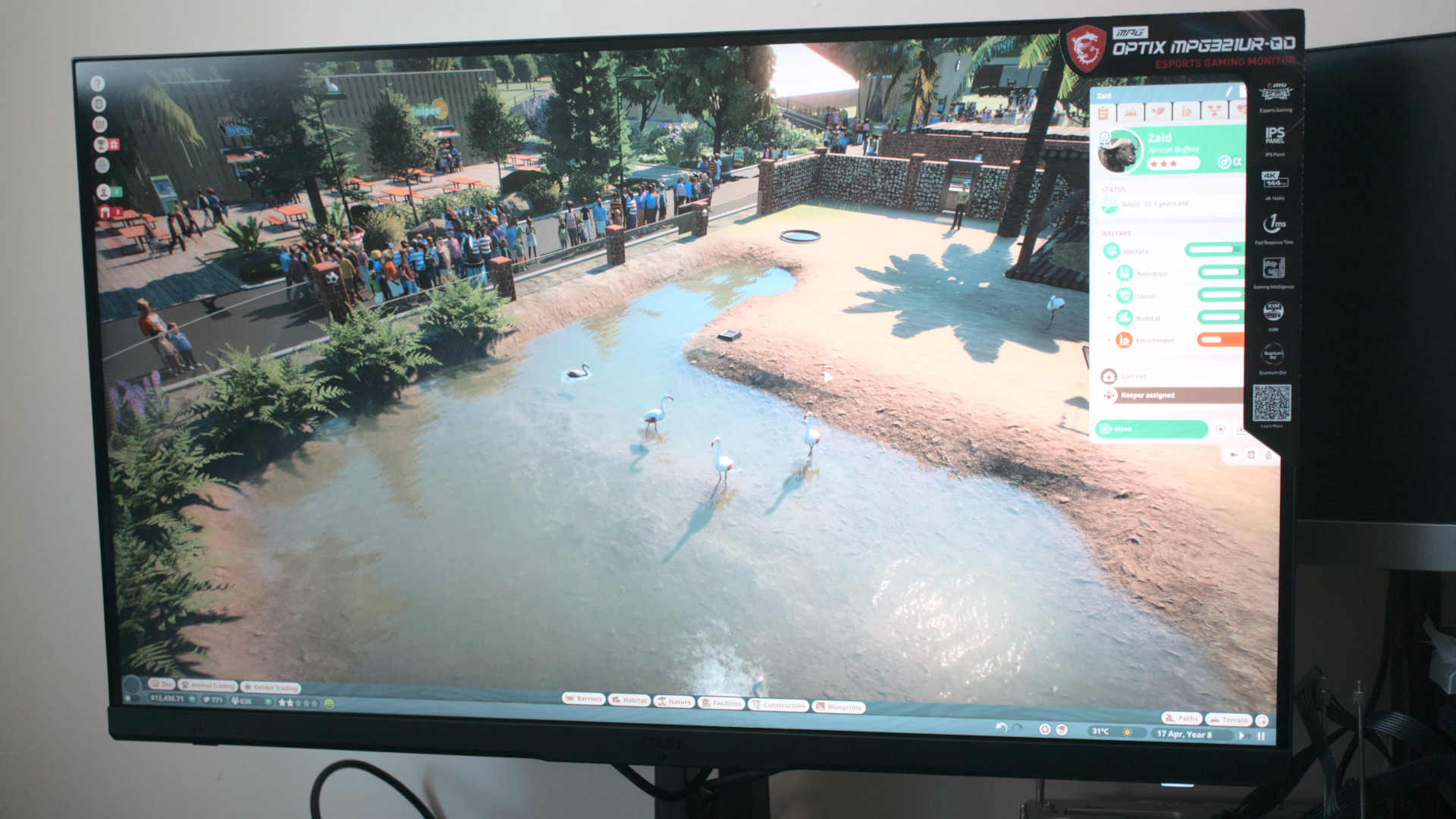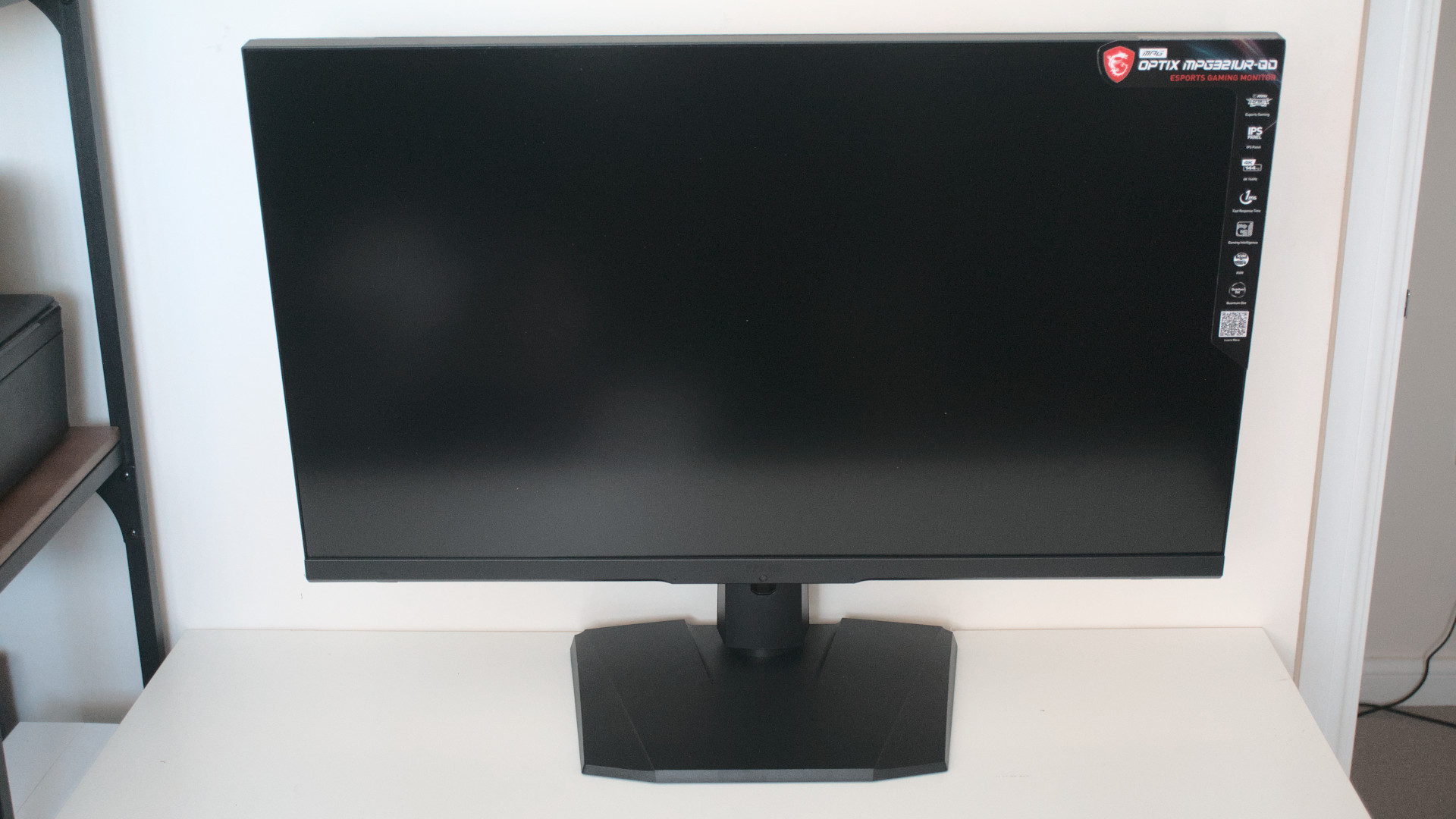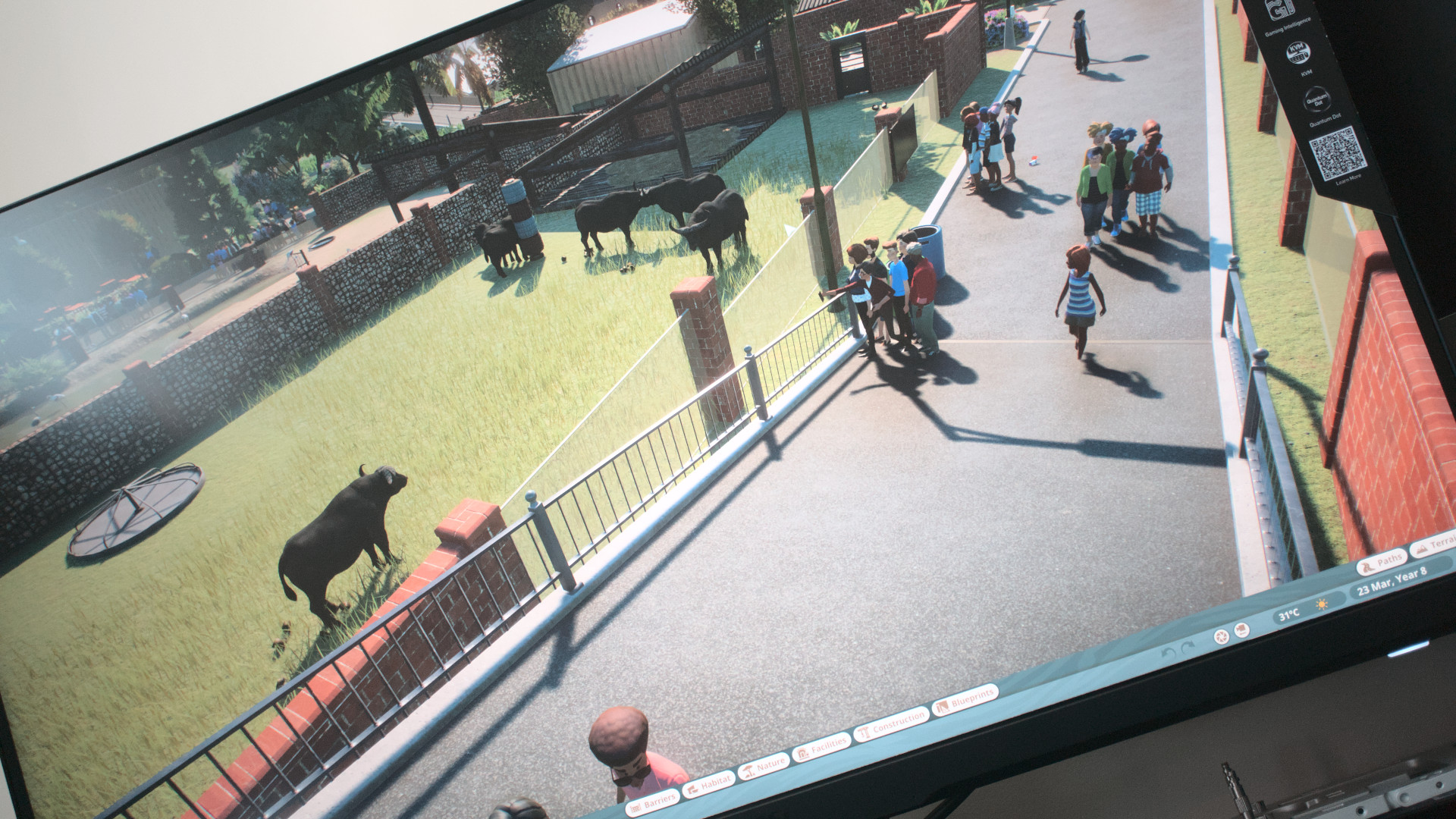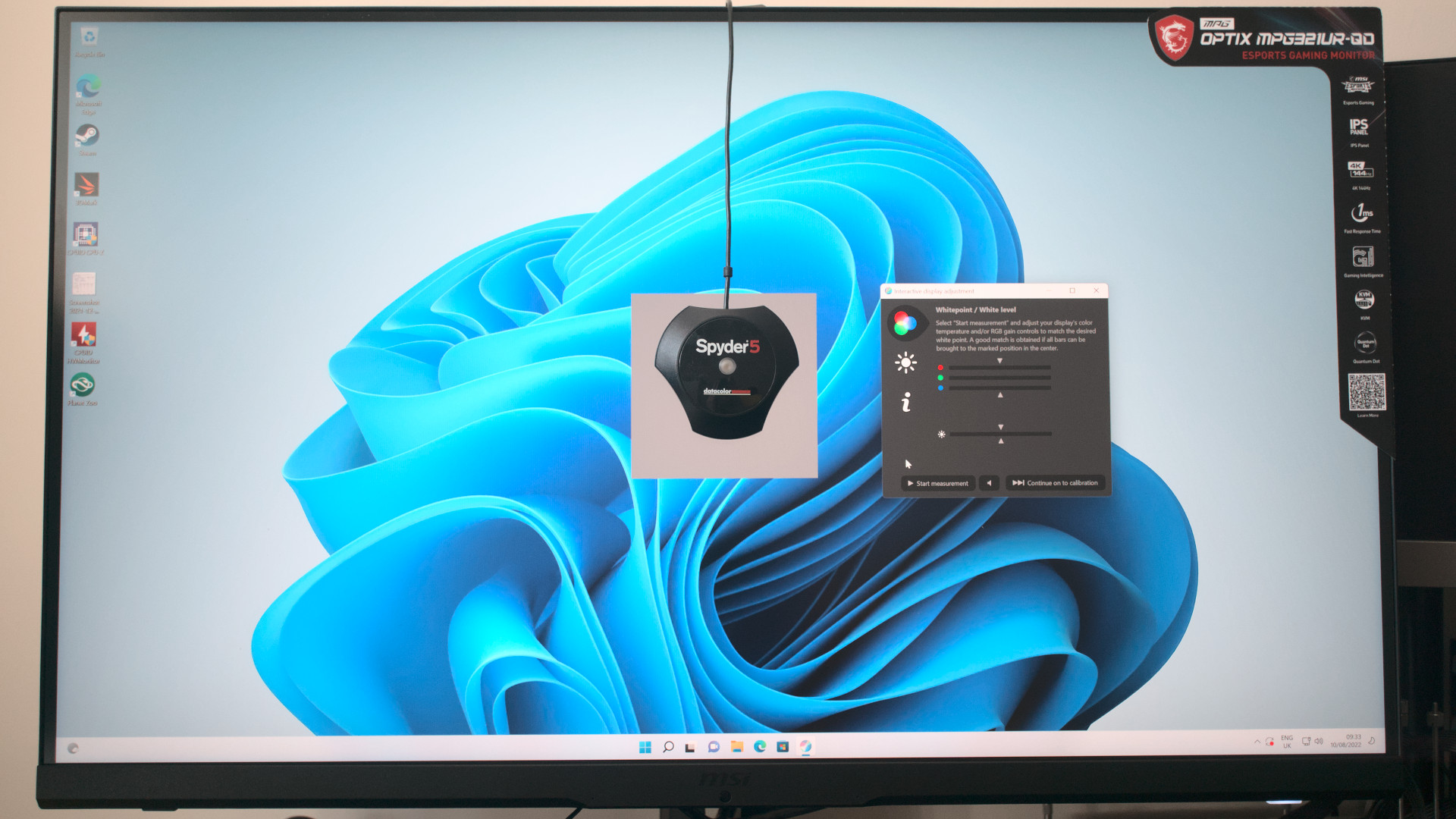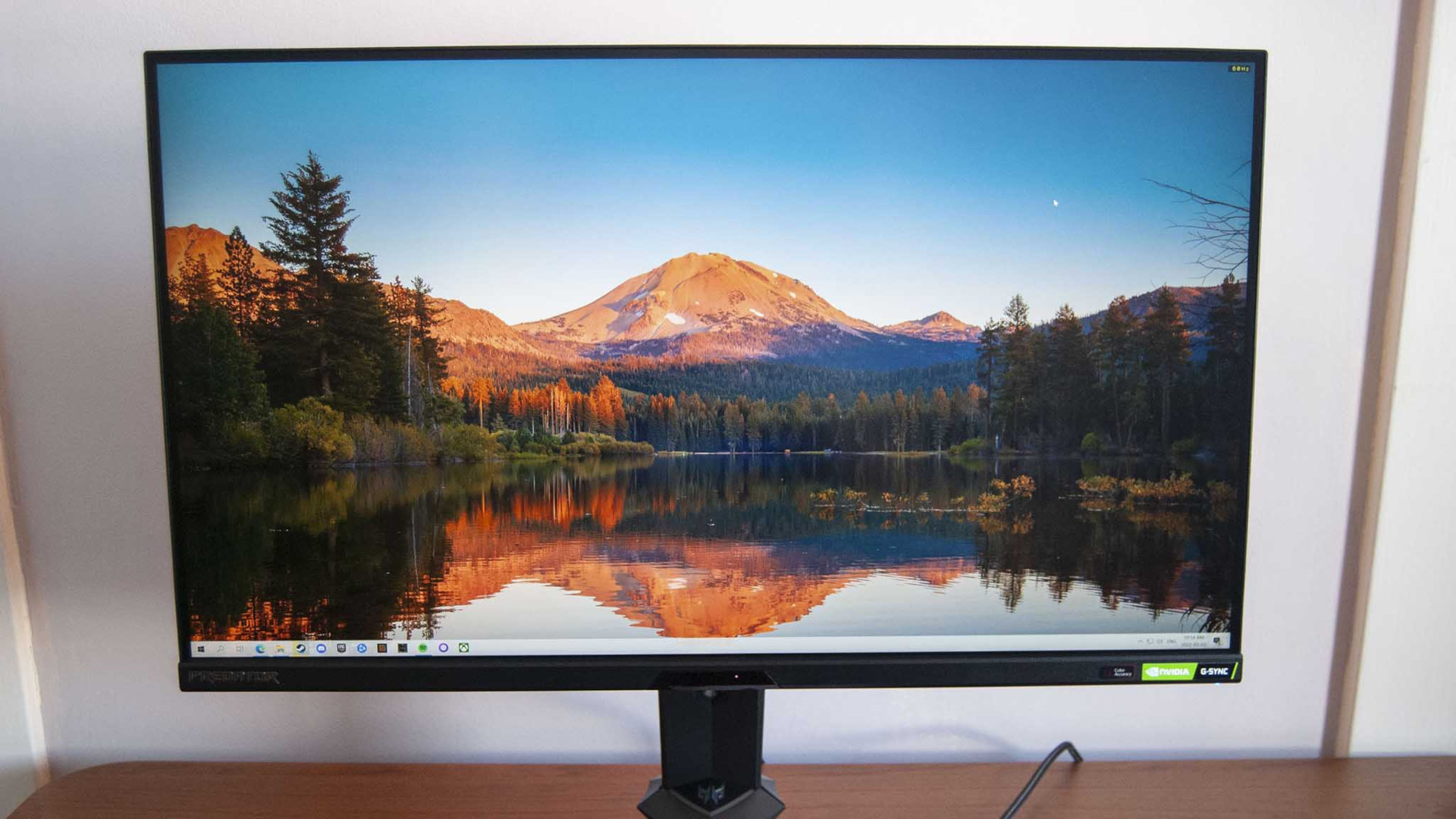Windows Central Verdict
There's so much to appreciate with the mightily impressive MSI Optix MPG321UR-QD. Should you be hunting for one of the best value and feature-rich gaming monitors on the market, you're just found it.
Pros
- +
Gorgeous IPS-QD panel
- +
Impressive gaming specs
- +
Factory calibrated
- +
HDR support
- +
G-Sync and FreeSync
Cons
- -
Pricey
- -
No stand pivot support
Why you can trust Windows Central
When it comes to picking the right 4K monitor for your gaming setup, it's easy to choose some branded model off the shelf and call it a day. But if you want to select the best value screen to really get the most out of your money, there are monitors like the MSI Optix MPG321UR-QD.
As the name implies, this is a 32-inch quantum dot monitor. It has a 4K resolution and other premium features. MSI believes this to be one of the best 4K monitors for gaming at this price point and this review will run you through what we love (and don't) about the Optix MPG321UR-QD.
Price, specs, and availability
The MSI Optix MPG321UR-QD has some impressive specifications for a gaming monitor, which means you're going to be paying a pretty penny for the luxuries. Available at the time of this review for $900, the Optix MPG321UR-QD is out of reach for most gamers who are looking to upgrade to a 4K monitor.
It's not a terrible price, however, and fits in line with other competitor screens. MSI didn't hold back, loading this thing up with a 32-inch IPS-QD panel with some compelling numbers. According to MSI, this screen is capable of meeting 99% Adobe RGB, 97% DCI-P3, and 143% sRGB for color accuracy, making it an ideal panel for work and play.
| Specifications | MSI Optix MPG321UR-QD |
|---|---|
| Panel | 32-inch IPS-QD |
| Aspect ratio | 16:9 |
| Curvature | N/A |
| Resolution | 3840x2160 (UHD) |
| Brightness | 400 cd/m² (600 cd/m² with HDR) |
| Color gamut | 99% Adobe RGB, 97% DCI-P3, 143% sRGB |
| Colors | 1.07B (10-bit) |
| Response time (GtG) | 1ms |
| Sync support | NVIDIA G-Sync |
| Row 9 - Cell 0 | AMD FreeSync |
| Refresh rate | 144Hz |
| HDR | DisplayHDR 600 |
| Ports | 1x Display Port (UHD @ 144Hz) |
| Row 13 - Cell 0 | 2x HDMI (UHD @ 144Hz) |
| Row 14 - Cell 0 | 1x USB Type C (alternative DisplayPort) |
| Row 15 - Cell 0 | 6x USB-A 2.0 |
| Row 16 - Cell 0 | 3x USB-B 2.0 |
| Row 17 - Cell 0 | 3x 3.5mm audio jack (headphone, mic, combo) |
| PSU | External power brick |
| VESA | 100mm x 100mm |
| Dimensions | 727mm x 482mm x 252mm |
| Weight | 10.1kg |
| Colors | Black |
Other spec highlights include HDR 600 support, a 144Hz refresh rate, a response time of just 1ms (GtG), and support for NVIDIA G-Sync. Whether you plan on hooking up your $2,000 gaming PC or an Xbox Series X, the MSI Optix MPG321UR-QD has the specs to take your experience to the next level in terms of detail, at least on paper. Let's see how it performs in real-world tests!
MSI Optix MPG321UR-QD: Design & features
I'm a big fan of the direction companies have taken since the early to mid-2010s when gaming displays were like early electric vehicle concepts. What do gamers want most? High refresh rate and stunning visuals? No, how about some random red design elements and RGB lighting instead?
Monitors of today are far better designed and the same can be said about the MSI Optix MPG321UR-QD. It's a sleek slab of black plastic with very small bezels up front. The rear has some aggressively styled angles to incorporate venting, a slight dose of RGB lighting, and there's a metal badge that oozes premium design.
All the latest news, reviews, and guides for Windows and Xbox diehards.
The stand included for the screen is a little on the small side, though is made of metal and feels sturdy enough to hold up the main panel. It's capable of tilting, swiveling, and height adjustment, but no sight of any pivot motion. This would be more of a concern if MSI didn't include VESA mount support on the rear.
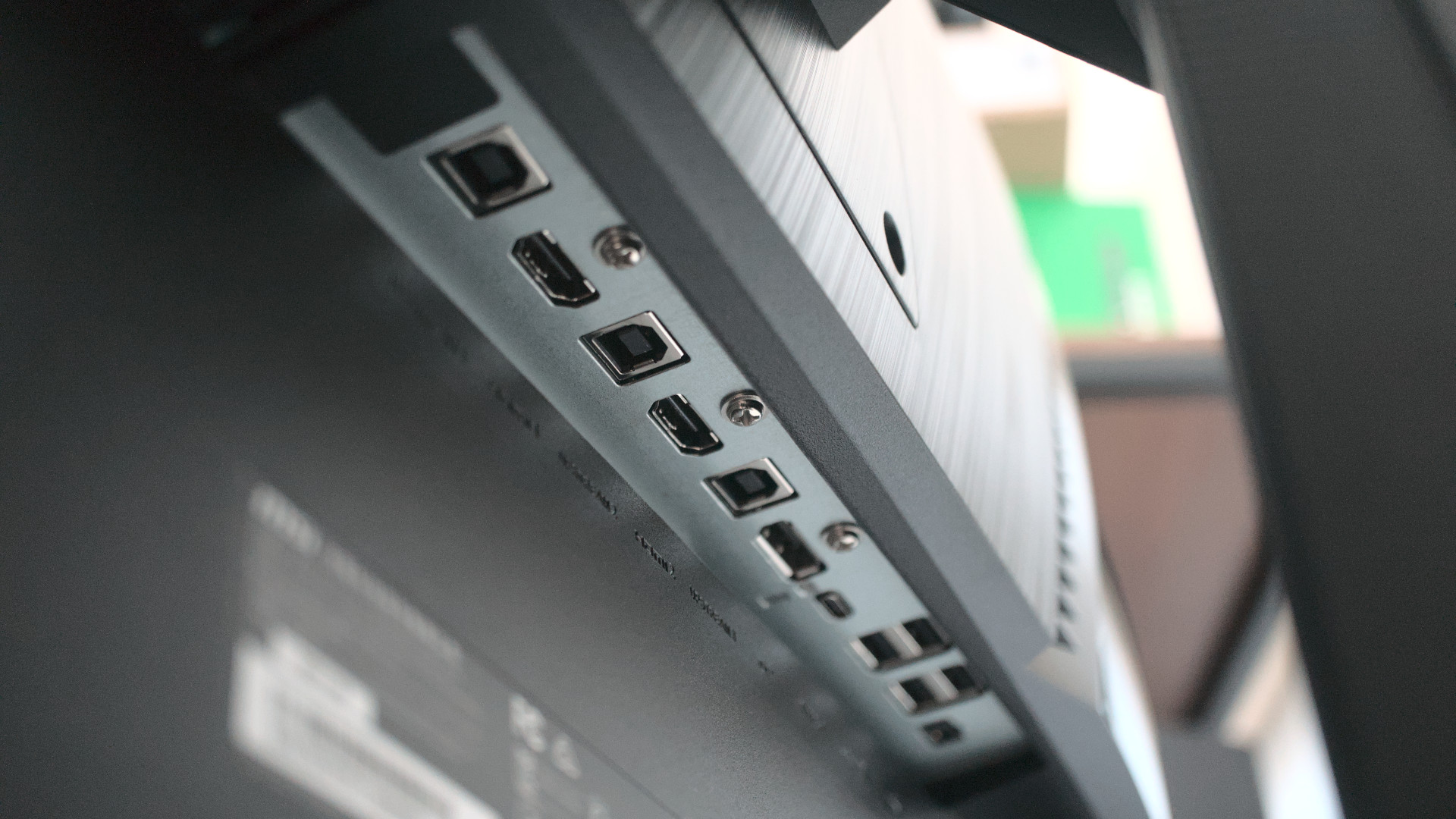
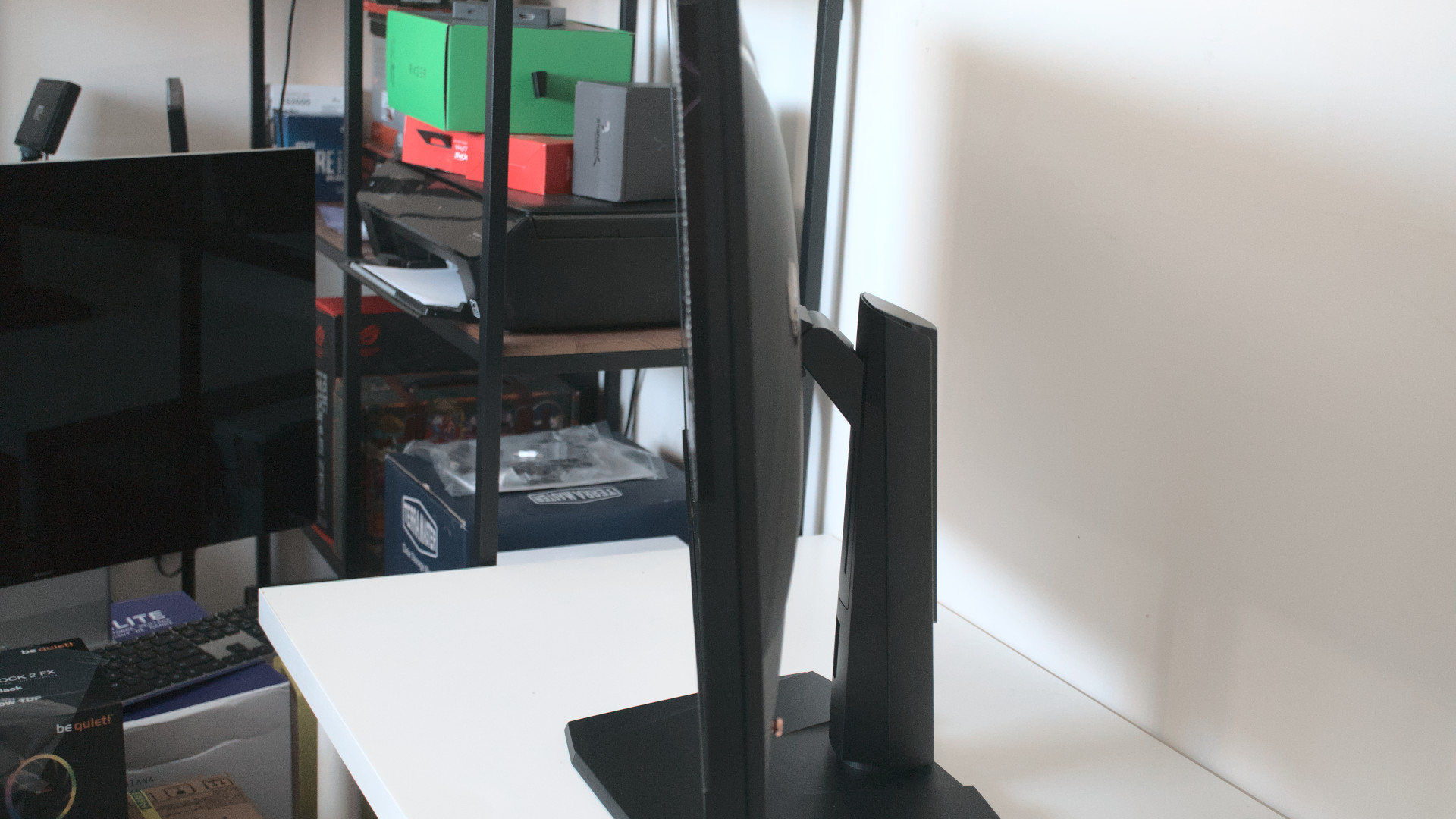
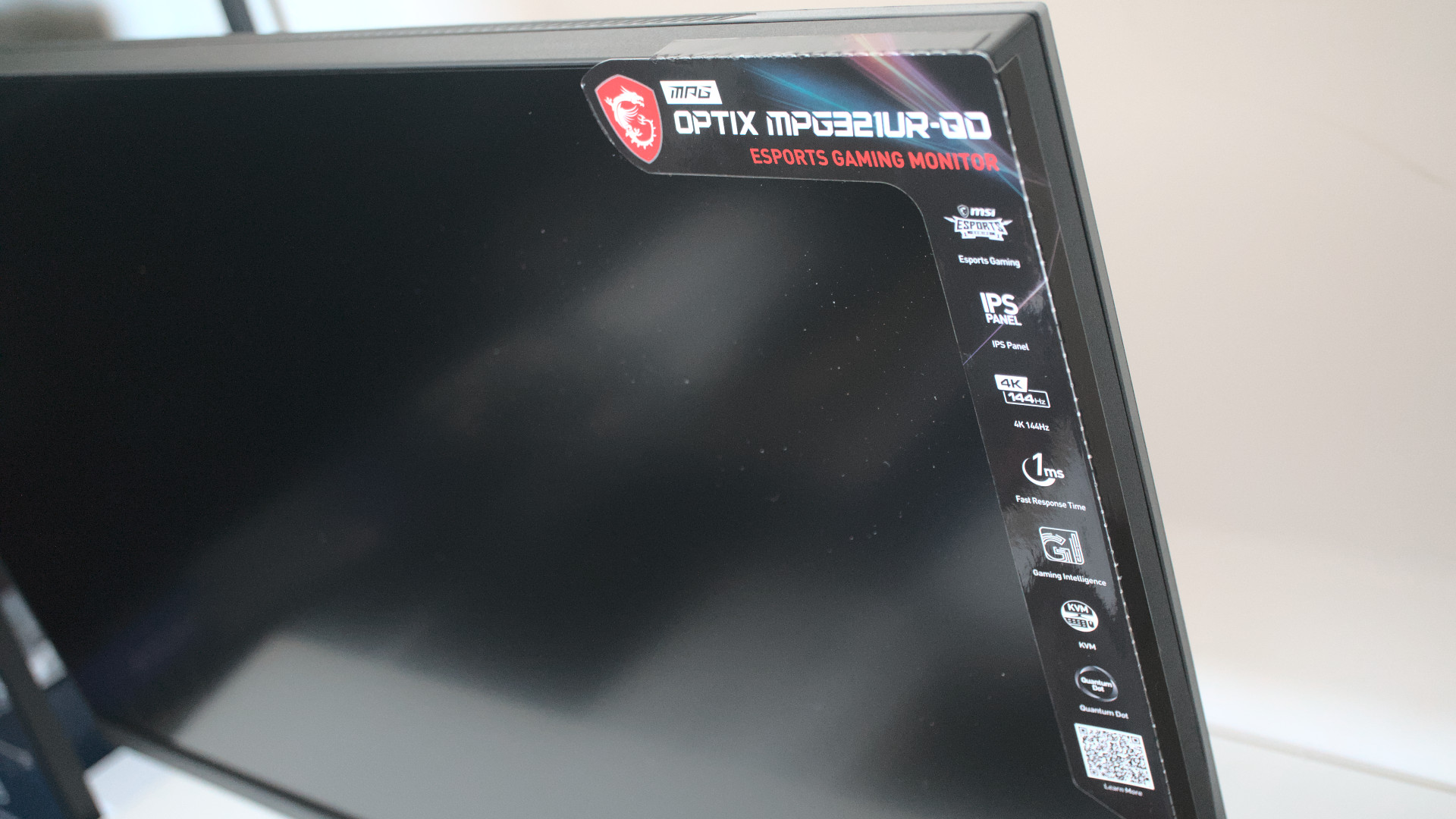

The sheer number of available ports on this display is insane. We're talking two HDMI ports, one DisplayPort with a secondary Type-C port, three USB-B 2.0 ports, and six (yes, six) USB-A 2.0 ports. These are what make the KVM work by hooking up all your PC peripherals.
There are some neat features that can be manipulated through the on-screen display (OSD), including an adjustable crosshair, calibration, a scope magnifier, and the aforementioned integrated KVM for using one monitor, keyboard, and mouse with up to three PCs. It all just works and is a breeze to get up and running from unboxing.
MSI Optix MPG321UR-QD: Quantum dot display
MSI makes a point to emphasize the QD in quantum dot, which is fancy tech found in plenty of televisions ... and now gaming monitors. In the most basic terminology, QD-IPS screens simply allow for boosted color accuracy and improved brightness, both of which are incredibly important for gaming, consuming media, and HDR.
Standard brightness measures in at 419cd/m² and HDR enabled saw it leap to a whopping 613cd/m². Both are very good results for those who have a bright light source like a smart bulb or window close by. MSI states this display is capable of meeting a contrast ratio of 1,000:1, but we experienced beyond that at about 1,191:1. Again, top marks for the MSI panel.
The high contrast and brightness are partly down to the quantum dot IPS panel, which also translated to excellent color accuracy. MSI wasn't joking on the spec sheet as we observed results of 99%, 94%, and 158% for Adobe RGB, DCI-P3, and sRGB, respectively.
MSI Optix MPG321UR-QD: Gaming performance
Gaming performance for monitors is very subjective as it entirely depends on the PC connected to them. While we attempt to utilize similar hardware between reviews in our test benches, these results may differ from what you experience. To adequately put the MSI Optix MPG321UR-QD to the test, we used an Intel Core i5-12600K processor and an NVIDIA GeForce RTX 3080 graphics card.
If you're seeking the absolute most responsive gaming experience for competitive play, you're likely in the wrong park as the MSI Optix MPG321UR-QD isn't designed for such use. It supports a maximum native refresh rate of 144Hz without overclocking support, meaning you won't be able to push it any further like some other screens.
Gaming on the MSI Optix MPG321UR-QD is nothing short of amazing. Whether you're into fast-paced first-person shooters and chilled simulators, your favorite games will look as intended by the developers on this IPS panel. The excellent color gamut scoring also makes the display good for work too. Editing photos using GIMP was a breeze with popping colors abound. The same can be said for movies too.
Blacks aren't quite as dark as other non-QD panels and it's easy to spot if you're used to displays that offer higher levels. It's not noticeable to the untrained eye, however, and really doesn't make too much of a difference in-game. They're more than good enough.
HDR simply takes content to a whole new level (like UHD vs. FHD) and there was no exception here. Supported games looked incredible with the heightened brightness. Seriously, I've never enjoyed dying so many times in Elden Ring. Should you plan on using the MPG321UR-QD for console gaming, this screen does support up to 4K at 120Hz with FreeSync for the latest Xbox and PlayStation models.
MSI Optix MPG321UR-QD: Competition
MSI has done a great job kitting the Optix MPG321UR-QD out with high-end features for gaming, making it competitive against plenty of other screens. The AOC U32E2N is the same size and rocks the same resolution, but costs considerably less and doesn't have HDR or as accurate color reproduction. This simply illustrates what's on offer with the MSI screen.
A similar, smaller 4K gaming monitor is available in the form of the Acer Predator X28. It too has a UHD display with a similar refresh rate and solid color reproduction. We gave the monitor a positive review, noting the neat auto color and brightness, as well as the integrated human presence detection. It's more affordable but has weaker HDR and some other disadvantages to the MSI Optix panel.
Another close competitor to this display would be the ASUS PG32UQ , though the ASUS screen has fewer ports, slightly worse performance, and no KVM support to allow the use of a single screen and peripherals with two connected PCs.
MSI Optix MPG321UR-QD: Should you buy?
You should buy if ...
- You want a 4K gaming monitor and have the GPU to power such a display
- You want to enjoy gorgeous visuals with a high refresh rate
- You don't mind spending more than $800 on a monitor
- You have your own VESA-compatible stand or mounting arm
You shouldn't buy if ...
- You don't have a 4K-capable GPU
- You don't plan on gaming too often
- You want an affordable monitor
- You don't want a 32-inch screen
If you're after a top-class gaming monitor with the latest technologies, the MSI Optix MPG321UR-QD is certainly worth shortlisting. It has all the bells and whistles you'll need for PC (and console) gaming, including a high refresh rate, contrast ratio, brightness, and sync support for both AMD and NVIDIA. Throw in fantastic color accuracy and you've now got a jack-of-all-trades display.
The price may put some gamers off. Paying $800 and beyond for a display isn't what anyone would enjoy carrying out on a gloomy day, but this display is bright enough to turn a slightly more frugal frown upside down. If we were to rate this panel for gaming performance alone, it would receive full marks. It doesn't matter if you're into GTA V, PUBG, Fortnite, or Planet Zoo, you're going to have a blast.
It's easy to get lost in the sea of buzz words, and while quantum dot may be yet another term to remember the next time you shop for a display, it really does have a positive impact here. Another neat trick is the integrated VESA mounting support for using your own arm or stand. Simply put; the MSI Optix MPG321UR-QD is just awesome.
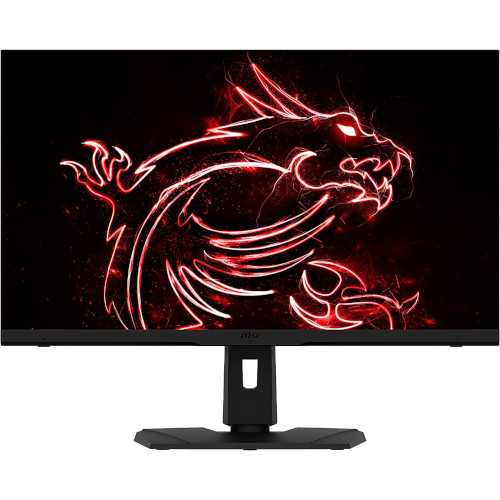
MSI packed plenty of cool tech inside the Optix MPG321UR-QD. There's fancy QD technology incorporated with the IPS panel, a high refresh rate, support for G-Sync, and more!

Rich Edmonds was formerly a Senior Editor of PC hardware at Windows Central, covering everything related to PC components and NAS. He's been involved in technology for more than a decade and knows a thing or two about the magic inside a PC chassis. You can follow him on Twitter at @RichEdmonds.
